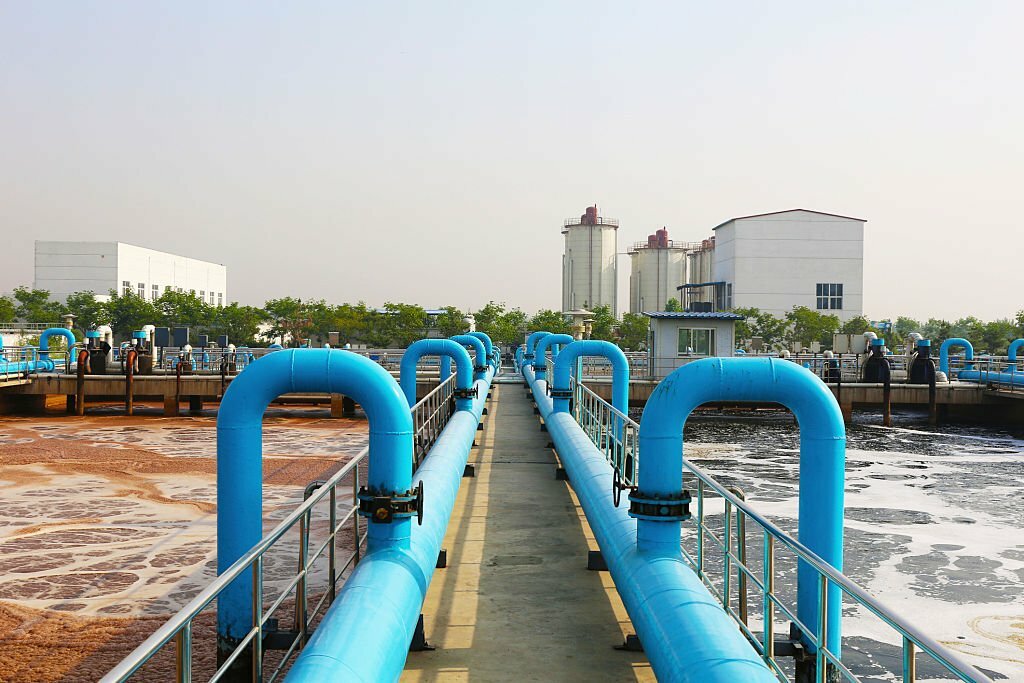Top 10 Innovations Transforming Wastewater Treatment Plants in 2025
As population growth, urbanization, and industrial activities continue to strain freshwater resources, wastewater treatment plants are under pressure to become...

As population growth, urbanization, and industrial activities continue to strain freshwater resources, wastewater treatment plants are under pressure to become more efficient, sustainable, and adaptive. In 2025, the landscape of wastewater management is being redefined by advanced technologies that enhance treatment effectiveness, reduce operational costs, and support environmental goals.
Here’s a look at the top 10 innovations transforming wastewater treatment plants this year:
1. Smart Monitoring with Real-Time Sensors
Traditional wastewater treatment relied heavily on manual sampling and delayed lab analysis. Today, smart sensors are being deployed across plants to continuously monitor parameters such as pH, turbidity, total suspended solids (TSS), and chemical oxygen demand (COD). These sensors allow for real-time decision-making, early detection of anomalies, and immediate corrective action, leading to better process control and reduced risks.
2. AI-Driven Process Optimization
Artificial Intelligence (AI) and machine learning are now essential tools in optimizing plant operations. By analyzing historical and live data, AI can predict influent fluctuations, suggest optimal chemical dosing, and improve aeration control. The result? Lower energy consumption, fewer manual interventions, and improved treatment consistency.
3. Membrane Bioreactor (MBR) Technology
Membrane Bioreactors combine biological treatment with membrane filtration, enabling the production of high-quality effluent that meets stringent discharge or reuse standards. MBRs offer a compact footprint, better pathogen removal, and consistent performance, making them ideal for urban and space-constrained environments.
4. Energy-Positive Wastewater Plants
Energy efficiency has always been a concern in wastewater treatment. Now, the goal has shifted towards energy positivity. Through anaerobic digestion, biogas capture, and combined heat and power (CHP) systems, modern plants are not only self-sustaining but also capable of supplying surplus energy to nearby grids or facilities.
5. Advanced Oxidation Processes (AOPs)
Emerging contaminants like pharmaceuticals, endocrine disruptors, and microplastics are tough to remove using traditional methods. AOPs utilize hydroxyl radicals generated from ozone, hydrogen peroxide, or UV light to decompose complex organic pollutants, ensuring water safety and compliance with updated environmental standards.
6. Internet of Things (IoT) Integration
IoT is enabling a fully connected treatment plant ecosystem. Pumps, valves, meters, and aeration systems are linked to centralized dashboards that allow operators to monitor performance, schedule predictive maintenance, and receive alerts in case of irregularities. IoT-driven automation increases plant reliability and reduces downtime.
7. Decentralized and Modular Systems
With growing demand in remote and underdeveloped areas, modular and decentralized treatment systems are gaining popularity. These systems are containerized, scalable, and easy to deploy—ideal for rural communities, mining camps, construction zones, or disaster relief situations. They offer flexibility while still delivering compliant treatment outcomes.
8. Nutrient Recovery and Reuse
New technologies now allow plants to recover valuable nutrients such as nitrogen and phosphorus from wastewater. Techniques like struvite precipitation not only reduce the risk of pipe scaling and eutrophication but also produce marketable fertilizer products, creating additional revenue streams and supporting sustainable agriculture.
9. Carbon Capture and Emission Reduction
With increased focus on carbon neutrality, some wastewater plants are integrating carbon capture systems to reduce greenhouse gas emissions. Innovations in sludge management—such as converting biosolids into biochar or green construction materials—further enhance a plant’s environmental performance and promote circular economy principles.
10. Digital Twins for Predictive Modeling
A digital twin is a virtual simulation of the physical treatment plant, continuously updated with real-time data. These models allow operators to test different scenarios, optimize processes, and predict equipment failures before they occur. Digital twins are proving invaluable in planning upgrades, improving reliability, and enhancing long-term decision-making.
Looking Ahead: The Future of Wastewater Treatment
As the global population continues to rise and freshwater scarcity intensifies, wastewater treatment plants are no longer just compliance centers—they are becoming resource recovery hubs. With the integration of cutting-edge technologies and sustainable design principles, they now have the potential to reclaim water, generate energy, and extract valuable nutrients.
At the forefront of this transformation is Cleantech Water, committed to delivering innovative and eco-friendly water treatment solutions tailored for modern needs. By staying ahead of technological trends and investing in future-ready systems, industries, municipalities, and private developers can ensure a cleaner, safer, and more resilient water future.
Conclusion
2025 marks a pivotal year for wastewater management. From AI and smart sensors to modular systems and energy recovery, the innovations listed above are not just improving treatment efficiency—they’re shaping the future of water sustainability. Embracing these technologies will allow wastewater treatment plants to operate smarter, cleaner, and more profitably in the years to come.



